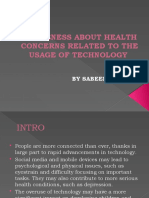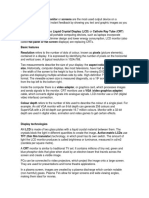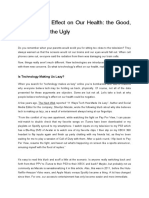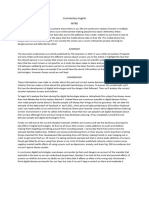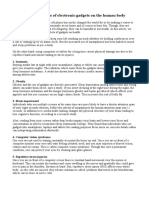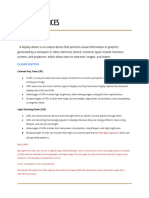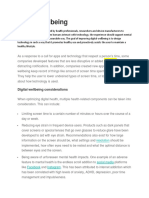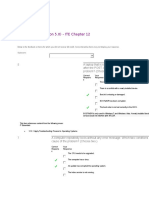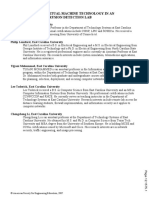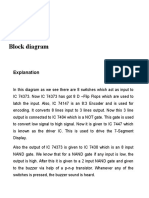0% found this document useful (0 votes)
7 views7 pagesFinal Peice
The document discusses the science behind screen technology, including various types of screens, how they display images, and the impact of electromagnetic waves on digital connectivity. It also addresses the effects of excessive screen use on human health, including eye strain, sleep disruption, and mental health issues, while providing solutions to reduce screen addiction and promote better digital habits. Strategies include setting screen time limits, using blue light filters, encouraging offline activities, and fostering parental and teacher involvement.
Uploaded by
dmdbuildconCopyright
© © All Rights Reserved
We take content rights seriously. If you suspect this is your content, claim it here.
Available Formats
Download as DOCX, PDF, TXT or read online on Scribd
0% found this document useful (0 votes)
7 views7 pagesFinal Peice
The document discusses the science behind screen technology, including various types of screens, how they display images, and the impact of electromagnetic waves on digital connectivity. It also addresses the effects of excessive screen use on human health, including eye strain, sleep disruption, and mental health issues, while providing solutions to reduce screen addiction and promote better digital habits. Strategies include setting screen time limits, using blue light filters, encouraging offline activities, and fostering parental and teacher involvement.
Uploaded by
dmdbuildconCopyright
© © All Rights Reserved
We take content rights seriously. If you suspect this is your content, claim it here.
Available Formats
Download as DOCX, PDF, TXT or read online on Scribd
/ 7


